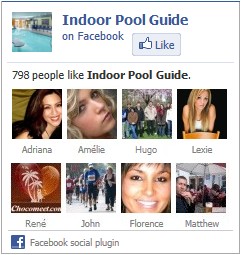
Emergency Procedures
Exposure of Pool Water to Faecal Matter
The treatment required will depend upon the condition of the faecal matter introduced. Loose faecal matter (diarrhoea) requires greater treatment than a firm stool, as it is more likely to contain a large number of microorganisms, will spread rapidly over a large area and is not easily retrieved from the pool.
Pool operators will need to assess each situation and make a judgment about the exact action to be taken.
Loose Stool
The following are guidelines for responding to loose faecal matter in the pool:
1. The pool, in the vicinity of the faecal accident, should be cleared of people.
2. The faecal matter should be removed as thoroughly as possible using a fine mesh scoop net or vacuumed to waste.
3. The pool should be superchlorinated, with the bulk of the disinfectant added to the immediate vicinity of the accident.
4. The pool should be superchlorinated that night.
5. The pool filters should be backwashed that night.
6. Details of the accident and treatment should be noted in the pool operation log.
7. Patrons should only be allowed back into the water when disinfectant and pH levels are within recommended ranges and all faecal matter has been removed from the water.
Firm Stool
A firm solid stool requires the following action:
The pool in the vicinity of the faecal accident should be cleared of people.
1. The stool should be removed.
2. Water should be tested to ensure compliance with the Health Regulations.
3. If the water meets the Regulations, patrons may be allowed to re-enter the water.
Contamination of the Pool Water by Blood or Vomit
If blood or vomit contaminates the pool water, the following action should be taken:
1. The pool in the vicinity of the accident should be cleared of people.
2. Large particles should be removed using a fine mesh scoop net, vacuumed to waste.
3. Allow and assist any remaining contaminant to disperse.
4. Water should be tested to ensure compliance with the Health Regulations.
5. If the water meets the Regulations, patrons may be allowed to re-enter the water.
Disinfection of Contaminated Surfaces
Any contaminant on the pool deck should not be washed into the pool water circulation system.
Chlorine based disinfectants are commonly used for dealing with blood or body fluid spills. For example, a
1:10 dilution of sodium hypochlorite in water can be used. Dangerous Goods (Storage and Handling) Regulations should be consulted before preparing chemical dilutions.
The procedure for dealing with a contaminated surface is:
1. Wear rubber gloves and remove excess contaminant using disposable paper towels or similar.
2. Wipe non-porous surfaces with hot water and detergent and then flood with a chlorine based disinfectant and leave for ten minutes.
3. Porous surfaces, such as the pool deck, are more difficult to clean. Wash the area thoroughly with detergent and allow the run off to go down the drain. Flood with a chlorine based disinfectant and leave for ten minutes.
4. Towels, gloves, excess contamination and other items should be placed in a bag and sealed. All contaminated items should be disposed of appropriately.

